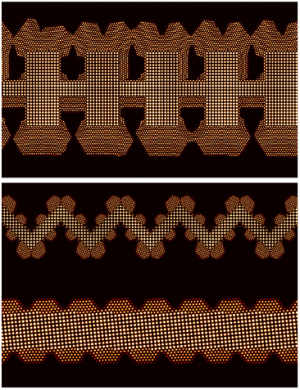
Frigyes Podmaniczky1, Gyula Tóth2, György Tegze1, László Gránásy1,3
1Institute for Solid State Physics and Optics, Wigner Research Centre for Physics, P.O. Box 49, Budapest H-1525, Hungary
2Department of Mathematical Sciences, Loughborough University, Loughborough, Leicestershire, LE11 3TU, U.K.
3BCAST, Brunel University, Uxbridge, Middlesex, UB8 3PH, United Kingdom
Crystallization of supersaturated liquids usually starts by epitaxial growth or by heterogeneous nucleation on foreign surfaces. Herein, we review recent advances made in modeling heteroepitaxy and heterogeneous nucleation on flat/modulated surfaces and nanoparticles within the framework of a simple dynamical density functional theory, known as the phase-field crystal model. It will be shown that the contact angle and the nucleation barrier are nonmonotonous functions of the lattice mismatch between the substrate and the crystalline phase. In continuous cooling studies for substrates with lattice mismatch, we recover qualitatively the Matthews–Blakeslee mechanism of stress release via the misfit dislocations. The simulations performed for particle-induced freezing will be confronted with recent analytical results, exploring thus the validity range of the latter. It will be demonstrated that time-dependent studies are essential, as investigations based on equilibrium properties often cannot identify the preferred nucleation pathways. Modeling of these phenomena is essential for designing materials on the basis of controlled nucleation and/or nano-patterning.


